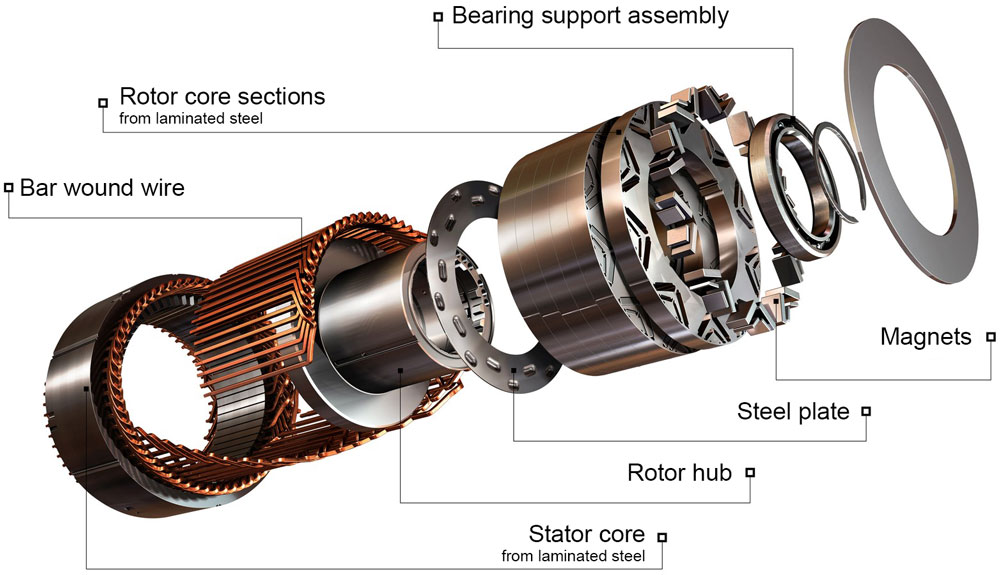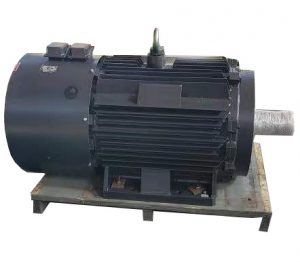Once an experimental novelty, electricity has become an integral part of modern life. Electricity provides lighting, climate control, entertainment, and more. To provide electricity, people convert other forms of energy into electrical energy to power systems and devices that people take for granted.
Electric motors and generators can be categorized based on several factors, including their fundamental operating principles and functions. The production or consumption of electrical energy, as well as the presence of current within the windings and driving elements, are critical factors that differentiate electric motors from generators. Both electric motors and generators operate based on Fleming’s Law.

Understanding the conversion of energy from one form to another is essential for distinguishing between electric motors and generators. Electric motors convert electrical energy into mechanical energy that powers various machinery. Conversely, generators transform mechanical energy into electrical energy.
Electric motors and generators are very different in function and purpose. But both are closely integrated with Faraday’s law to support the principle of electromagnetic induction.
In 1831, physicist Michael Faraday made a groundbreaking discovery in the field of electromagnetism. His work on electromagnetic induction uncovered a significant connection between magnetic and electrical phenomena. Interestingly, another physicist named Joseph Henry independently made a similar discovery in 1832. However, Faraday was the first to consolidate his findings, earning him credit for this discovery. Later, James Clerk Maxwell developed the Faraday-Maxwell formula, which mathematically expressed Faraday’s discoveries.
Faraday’s law of induction is a fundamental physical principle that accurately predicts and detects how magnetic fields interact with electrical circuits to produce electromotive force (EMF). Electromagnetic fields are capable of converting different forms of energy, such as mechanical energy, into electrical energy. This foundational law of physics underpins the development of electric motors and generators. Despite operating on opposite functions, both these machines rely on the same basic principles of physics.
Both electric motors and generators fall under the category of machines. The main difference between electric motors and generators is that electric motors convert electrical energy into mechanical form, while generators do the opposite. Electric motors harness electricity, while generators generate electricity. Let’s learn more about the differences between electric motors and generators by understanding the basics of them.
Understanding the distinction between electric motors and generators is crucial in the realm of electricity physics. This article aims to outline the key differences between these two entities. However, prior to delving into their disparities, it is essential to grasp their fundamental concepts, structures, functions, and other pertinent details.
An electric motor is a motor that converts electrical energy into mechanical energy. Electric motors are powered by either direct current (direct current) (including a motor vehicle, a battery, or a rectifier) or alternating current (alternating current) (including an inverter, grid, or generator).
The working principle of an electric motor is simple. Instead of converting mechanical energy into electrical energy, electric motors convert electrical energy into mechanical output. Electric motors are used in a wide range of applications, from everyday household appliances to industrial manufacturing machinery.
To generate mechanical power, the rotor rotates the shaft, while the stator is comprised of either permanent magnets or coil windings with a thin disc core linked together. These layers create less energy loss than when a solid core is utilized without lamination. The small air gap between the rotor and the stator is advantageous in increasing the excitation current.
Although electric motors can be electrostatic, piezoelectric, or magnetic, most new motors use magnets. These motors may operate on direct or alternating current, and various sizes can be used in an extensive range of applications. From large electric motors that power industrial manufacturing machinery to the tiny motors in battery-powered watches, this durable yet sophisticated technology is essential in modern life.
Electric motors produce force in the form of torque exerted on the shaft through coordination between the current in the windings and the motor’s magnetic field. Electric motors move continuously or linearly over considerable distances compared to their size. It uses three different physical methods: electrostatic, magnetic and piezoelectric.
It can easily convert alternating current into mechanical output. We further divide it into three forms; they are inductive, synchronous, and linear.
-The induction motor is further categorized based on the rotor, including the Phase Wound Rotor and the Squirrel Cage Rotor, and the basis of phase including Single-phase form and Three-phase form.
-Synchronous Motor, which is further classified as the Reluctance Motor and Hysteresis Motor.

It simply converts direct current into mechanical output. It is mainly divided into two forms:
-Separately Excited type.
-The self-Excited type is further classified as the Series motor, Shunt motor, Compound wound motor, Long Shunt motor, and Short Shunt motor.
Generators convert mechanical energy into electrical output for use in external circuits. Mechanical power sources include gas turbines, water turbines, steam turbines, etc. There are two types of electromagnetic generators that are widely used, including generators and alternators.
Generators produce pulsed direct current within a commutator, while alternators produce alternating current.
Generators use a commutator to produce direct current. It is also self-exciting.
One form is the unipolar generator. This is a DC electrical system consisting of a conductive disk or cylinder moving in a plane perpendicular to a uniform magnetic field.
The other is the magnetohydrodynamic (MHD) generator. It can extract electrical energy directly from hot gases moving within a magnetic field without the use of a moving electromagnetic system.
The induction device mechanically rotates the rotor faster than synchronous speed, thus providing negative slip.
Linear Generator: In this type, a moving magnet slides back and forth inside a solenoid (a spool of copper material), stimulating alternating current into the wire.
Variable Speed Constant Frequency Generators: These generators can be used to harvest mechanical power from natural resources (tides, wind, etc.) to generate electricity.
An electric motor is a device that converts electrical energy into mechanical energy, while a generator is an instrument that converts mechanical energy into electrical energy.
Electric motors follow Fleming’s left-hand rule, while generators operate according to Fleming’s right-hand rule.
The working principle of an electric motor depends on the force exerted by a current-carrying conductor in a magnetic environment. However, the working principle of a generator is based on electromagnetic phenomena.
The motor’s shaft is magnetically driven, with a modification between the armature and the magnetic field. The generator’s shaft is connected to a rotor that is driven by mechanical power.
The grid and electricity supply are the source of energy for the motor. Water turbines, steam turbines and internal combustion engines are the main sources of generators.
In a motor, the current is supplied by the armature winding. Instead, current is produced in the armature winding of the generator.
The main types of motors are brushed DC motors, linear motors, brushless DC motors, direct drives, brushless AC motors, servo motors and stepper motors. The three basic forms of generators are portable, inverter, and standby.
Ceiling fans, cars, etc. are examples of electric motors. At the same time, generators are also commonly used in power stations to generate electricity.
-Electric motors convert electrical energy into mechanical energy, while generators do the opposite.
-Electric motors use electricity, but generators produce electricity.
-The shaft of a motor runs by the magnetic force generated between the armature and field winding, whereas in the case of a generator, the shaft is connected to the rotor and runs by mechanical power.
-The current should be supplied to the armature winding in an electric motor, whereas in a generator, the current is generated in the armature winding.
-Electric motors operate according to Fleming’s left-hand rule, while generators follow Fleming’s right-hand rule.
-One instance of an electric motor is seen in the context of electric bikes or cars.
Conversely, generators find application in energy stations, where a turbine serves as a mechanism to convert the mechanical force derived from the falling water in a dam into electricity.
These are the main differences between electric motors and generators. Suitable selection between electric motors and generators can be made based on the requirements, application and type of power source.